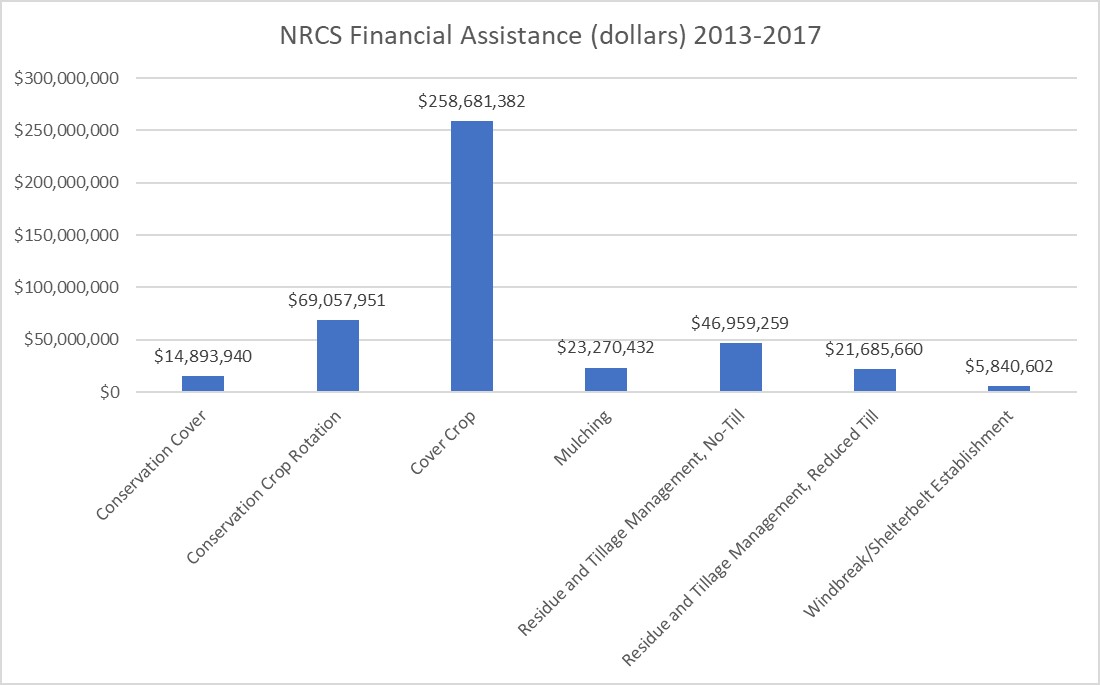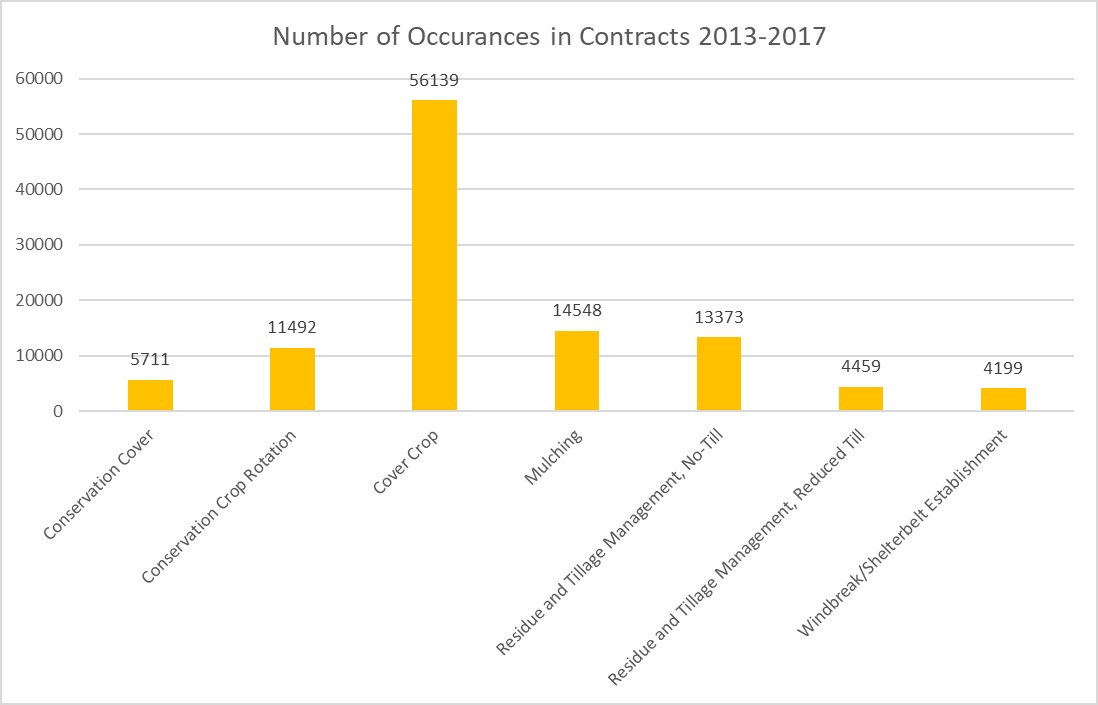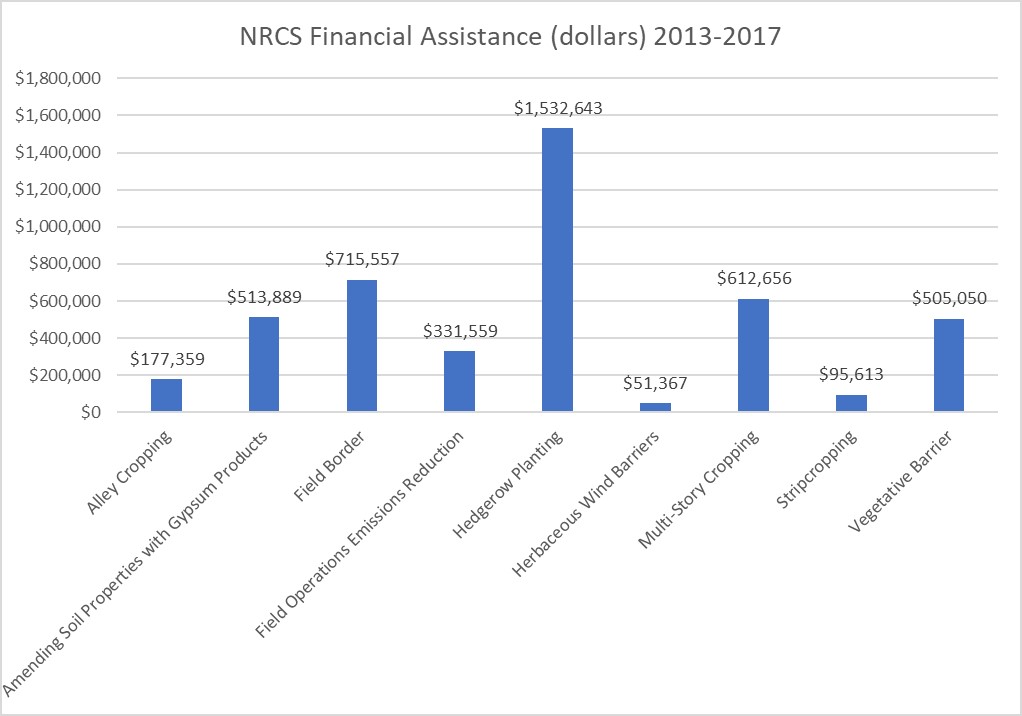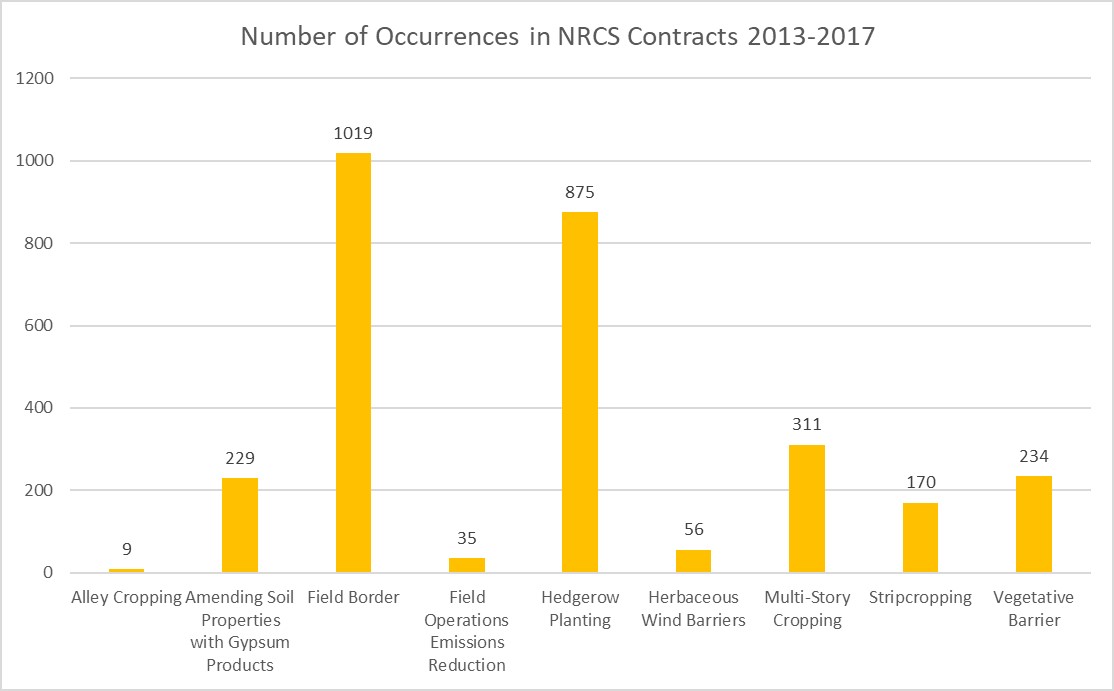The physical properties associated with wind erosion include: soil moisture, soil aggregate stability, soil crusting, surface rock fragments, vegetative cover, plant residue, soil organic matter, wind barriers, and surface roughness. Conservation practices utilized for wind erosion control favorably alter one or more of these properties. The following practices have been recognized by NRCS as having a positive impact on wind erosion on cropland, included are their respective Conservation Practice Physical Effect (CPPE) value (see Analyzing Effects of Conservation Practices and Alternatives in Chapter 5 of this handbook for an explanation of CPPE values):
Figure 6-1. Conservation practices that are recognized to address wind erosion on cropland.
A full list of NRCS practice standards can be found on the NRCS national website under Conservation Practices.48
Several of these conservation practices are recognized as having a positive effect on wind erosion even though they do not have a stated purpose listed in the practice standard for controlling erosion. For instance, Vegetative Barrier is used primarily for controlling water erosion, as the barriers are planted along the contours of slopes or across concentrated flow areas. However, they can have a positive effect on wind erosion because they interrupt the saltation and creep processes to varying extents. Other practices with similar considerations are Amending Soil Properties with Gypsum Products, Field Border, and Field Operations Emissions Reduction, where significant ancillary benefits to abating dust emissions can be obtained.
Only five of the above practices are exclusive to the wind erosion resource concern. They include Cross Wind Ridges, Cross Wind Trap Strips, Surface Roughening, Herbaceous Wind Barriers, and Windbreak. The remainder of the practices have multiple purposes. Practices such as Conservation Crop Rotation, Cover Crop, and Residue Management can address soil health issues, plant pests, water erosion, water quality, and soil compaction. These three practices are sometimes considered to be the “holy trinity” of soil and water conservation, as they frequently do more to minimize water and wind erosion, promote soil health and a diverse microbial population, and sustain water quality than the rest of the conservation practices combined. They are the key to building sustainable farming enterprises that are resilient in the face of a changing climate and harsh weather extremes. The key to the success of these practices is soil cover, diversity of crops grown, increased water holding capacity, and increased water infiltration rate.
Below is a graphical summary of conservation practices used to address the wind erosion resource concern within NRCS programs across the country (Figures 6-2 through 6-5). These programs include financial assistance programs and do not include practices installed with NRCS technical assistance only. Figure 6-2 and Figure 6-4 represent total NRCS dollars contributed for each practice for the five-year period between 2013 and 2017. Since dollars spent do not adequately show popularity of practice use, a set of graphs that depict the number of times each practice is used in programmatic contracts has also been provided (Figure 6-3 and Figure 6-5). Because some practices are used far more than others, both in dollars and count, the practices have been grouped for easier comparison.




Clearly, Cover Crop is by far the most utilized practice for controlling wind erosion, both in dollars spent, as well as number of occurrences in contracts. No-Till Residue Management and Conservation Crop Rotation come next, bearing in mind that these top three practices satisfy solutions to multiple resource concerns. Mulching, though, is more popular, as it occurs in contracts more often than does Conservation Crop Rotation and No-Till Residue Management. Investment in No-Till Residue Management more than doubles that of other Reduced Tillage Residue Management, indicative of NRCS’s successful marketing of that practice as well as its acceptance by farmers.
Interestingly, several practices were not implemented through NRCS financial assistance programs throughout the five-year span: Cross Wind Ridges, Cross Wind Trap Strips, and Surface Roughening. Additionally, the diminutive application of Herbaceous Wind Barriers and Stripcropping is worth noting. Farmers may prefer to invest in practices that offer solutions to multiple resource concerns, rather than apply practices that primarily address only wind erosion. However, one might conjecture that farmers that do not practice no-till or cover crops would have an interest in some of these soil saving wind erosion practices.
For graphs of each State’s implementation of wind erosion practices on cropland, please see Appendix B, Exhibit 6-1.
References
48. Conservation Practices | NRCS. https://www.nrcs.usda.gov/wps/portal/nrcs/detailfull/national/landuse/crops/npm/?&cid=nrcs143_026849. Accessed July 18, 2019.
